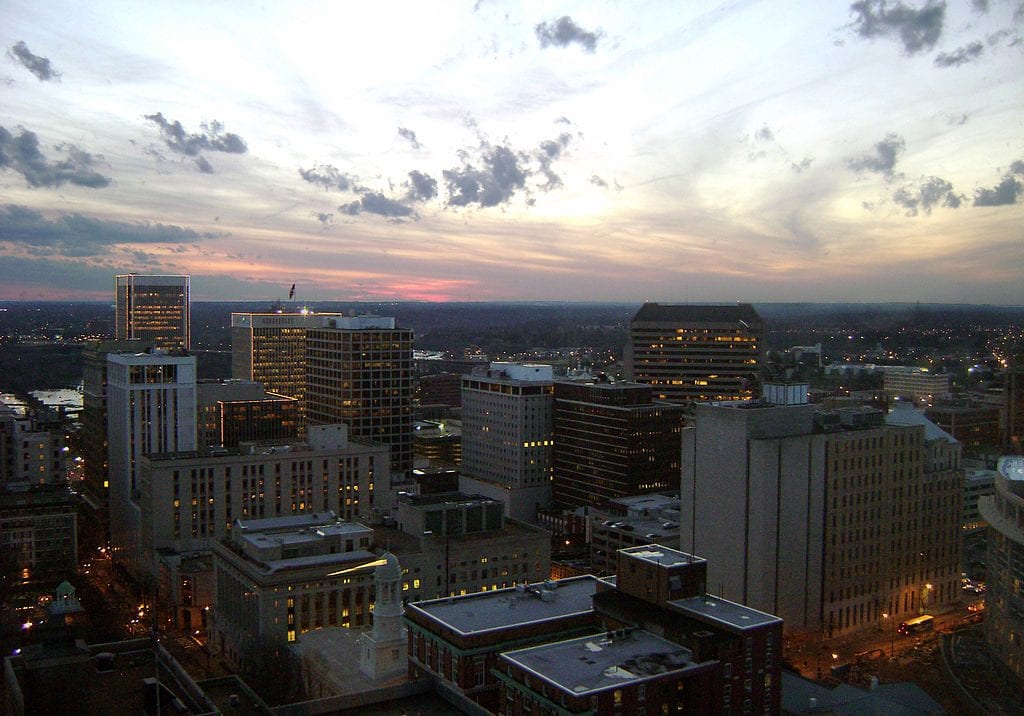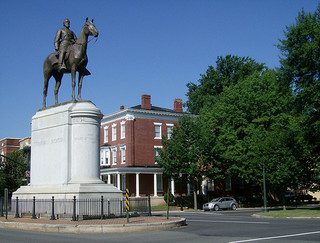
Will Weaver from Glen Allen, VA, United States. Edited by User:Patrickneil [CC BY-SA 2.0 (https://creativecommons.org/licenses/by-sa/2.0)]
Successful cities adapt. They do not achieve success by remaining static. Adapting might be thought of in terms of building a new economic base or welcoming changes in the city’s demographic makeup. But some cities need to go deeper. They suffer from festering wounds caused by decades, if not centuries, of injustice.
In his book “Richmond’s Unhealed History,” the Rev. Benjamin Campbell describes how racial and class-based oppression have interfered with forward progress and adaptation to a new era in the Virginia city.
Richmond today is an island of social ills surrounded by relatively affluent suburbs. The latter have historically shown little desire to work with the city to address its problems.
The author notes that in a large section of the city, the median household income is below the poverty line; the unemployment rate ranges from 22 percent to 60 percent; and the annual incarceration rate approaches 10 percent. To adapt to these present circumstances, Campbell says, the city and its suburbs must come to terms with their devastating history.
Campbell says the roots of Richmond’s present condition can be traced all the way back to the white settlers landing at Jamestown, just downriver, in 1607. The settlers viewed the native people they encountered as savages, and as savages they had no rights as human beings.
A similar view was established of blacks when the slave trade was established, although it is notable that the white, working-class indentured servants were treated with disdain as well. In fact, one of the key events in Virginia’s early political history was Bacon’s Rebellion, which was a violent uprising led by members of the white working class, along with black slaves, against the ruling white elite. Campbell traces this early history to show how oppression was fundamental to the state’s very formation. Richmond became Virginia’s economic and political center a short time later, and its development follows the state’s closely.
Richmond was the capital of the Confederacy during the Civil War. What many people, even students of the war, may not know is that the American slave trade was concentrated in the city’s downtown. Campbell writes that many Richmonders were not even aware of it. The city’s elite sought to keep it under wraps even though the trading of humans was one of the biggest drivers of the economy. Until the 1990s, students in Virginia public schools could not have found a reference to the slave trade in their textbooks. After the Civil War and Reconstruction, as black people saw their voting rights eliminated, what became the city’s most famous street, Monument Avenue, was laid out with statues of Confederate heroes.
After World War II, urban renewal and white flight happened in Richmond much as it did in cities across the country. But the way these events happened in Richmond is unique.
The state’s General Assembly passed a bill in 1971 to prevent Richmond from annexing any more land from surrounding suburbs. This was to stop integration of the white schools and housing. The suburbs then fought to keep the city’s public transit system from extending along the major arteries where suburban malls and office centers had sprung up. As whites, and then some better-off blacks, fled the city, they threw up roadblocks to keep the problems of the city confined to a small area.
Other Southern cities, such as Charlotte, took a more regional approach to economic and social adaptation, and arguably succeeded in crafting a new identity. Meanwhile, Richmond has remained somewhat stuck in a mire that is the product of its history. The city has had some recent success in building an identity as an urban outdoors mecca and it is in a promising location to strengthen its economic base, but there has been little progress toward racial reconciliation and confronting history.
During urban renewal, landmarks of the slave trade were buried under interstate off-ramps. For the past two decades a Slave Trail Commission has been at work with support from the city government, but there remains a sense that the larger population would prefer to leave this shameful history under concrete.
Campbell frames the problem and potential solution to Richmond’s ills in spiritual terms. He writes, “The greatness metropolitan Richmond has longed for is available, perhaps for both the first and last time, by facing its original sin.”





I absolutely enjoy reading your newsletter and the issues covered. Thanks for enlightening us!